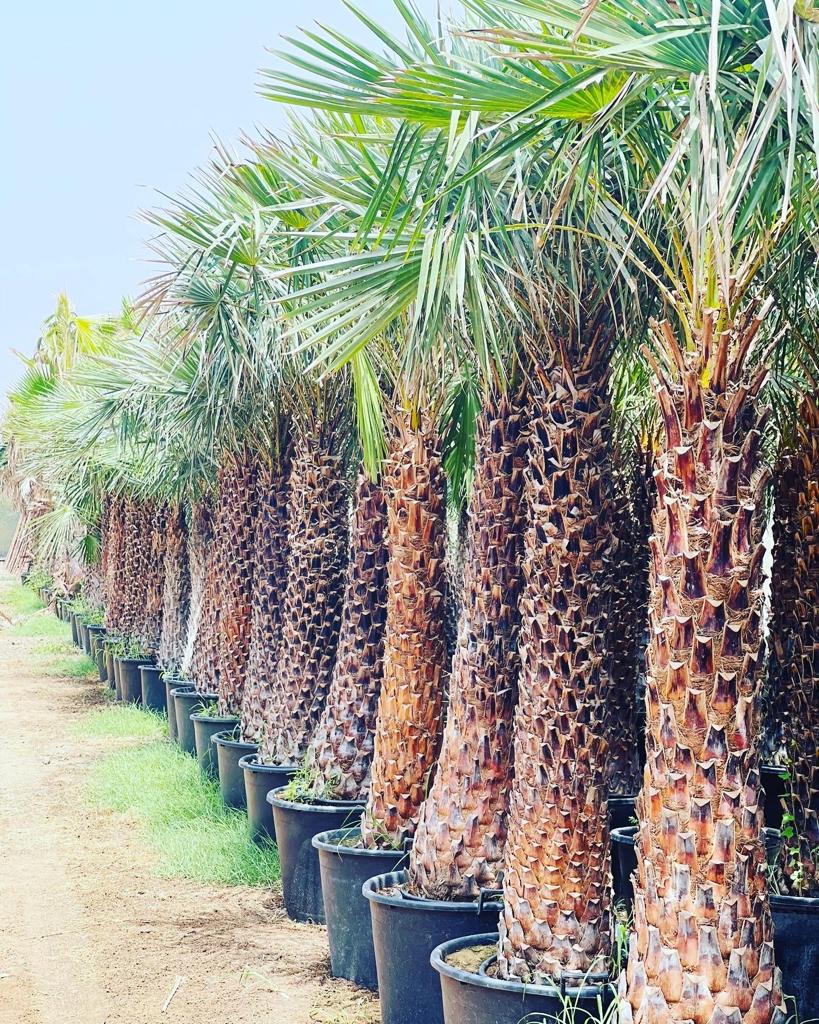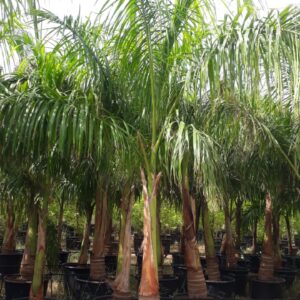Size: 2M
Wax Palm (Copernicia alba) scientifically known as Copernicia alba, is a palm tree that belongs to the Arecaceae family. It is native to South America, particularly found in countries like Paraguay, Bolivia, and Argentina. The Wax Palm is well-known for its unique and attractive appearance, as well as its various practical uses.
Here are some key features and information about the Wax Palm:
Appearance:
The Wax Palm (Copernicia alba) is a medium to large-sized tree, reaching heights of up to 80 feet (24 meters). It has a thick, grayish-brown trunk covered in a waxy layer, giving it a distinctive appearance. The trunk may also exhibit ring-like patterns caused by old leaf scars. At the top of the tree, a crown of large, fan-shaped leaves forms an elegant canopy.
Foliage:
The leaves of the Wax Palm are fan-shaped, with segments that radiate from a central point. They are usually bluish-green in color and can grow up to 5-8 feet (1.5-2.4 meters) in diameter.
Wax Coating:
The Wax Palm gets its name from the waxy layer that covers its trunk and leaves. This wax coating serves as a protective layer, reducing water loss and reflecting sunlight.
Practical Uses:
Various industries utilize the wax obtained from the Wax Palm, including cosmetics, pharmaceuticals, and candle making. Additionally, people use the leaves of the Wax Palm for thatching roofs and creating handicrafts.
Adaptability:
Wax Palms are well-suited to tropical and subtropical climates. They thrive in full sun exposure and are tolerant of a range of soil types, including sandy or loamy soils. They can also withstand periods of drought but benefit from regular watering during dry spells.
Landscape and Ornamental Value:
The Wax Palm is highly valued for its ornamental value and is commonly used in landscaping to create a tropical ambiance. Its unique trunk and fan-shaped leaves make it a visually appealing addition to gardens, parks, and urban landscapes.
Maintenance:
Wax Palms generally require minimal maintenance once established. Regular watering is necessary during dry periods to ensure healthy growth.
The Wax Palm’s distinctive appearance, practical uses, and adaptability make it a desirable palm tree in tropical and subtropical regions. It adds a touch of elegance and uniqueness to landscapes, making it a popular choice for those seeking a tropical ambiance.









Reviews
There are no reviews yet.